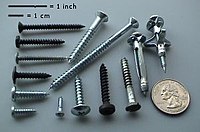
Photo from wikipedia
Abstract Rotary swaging reduces the cross section of bars and tubes and usually acts as a cold forming technology. The induced work hardening leads to products with high ultimate tensile… Click to show full abstract
Abstract Rotary swaging reduces the cross section of bars and tubes and usually acts as a cold forming technology. The induced work hardening leads to products with high ultimate tensile strength and low ductility. In contrast, hot forming processes result in parts with higher ductility and lower ultimate tensile strength but with finer grain compared to cold formed material. Fine grained materials have great significance due to a better tradeoff between strength and ductility. In this study, hot rotary swaging is examined to produce fine grain material from mild steel S355J2C. The experiments prove that hot rotary swaging produces parts with higher ductility than cold-formed parts. Due to the fine grain, the achieved high ultimate tensile strength is comparable to the cold drawn raw material. The highest ultimate tensile strength is achieved by combining fine grain with work hardening, when hot forming is followed by cold forming. In this way, the ultimate tensile strength of mild steel could be improved from Rm = 700 MPa to Rm = 1250MPa which is a typical value of high-alloyed steel.
Journal Title: Procedia Manufacturing
Year Published: 2020
Link to full text (if available)
Share on Social Media: Sign Up to like & get
recommendations!